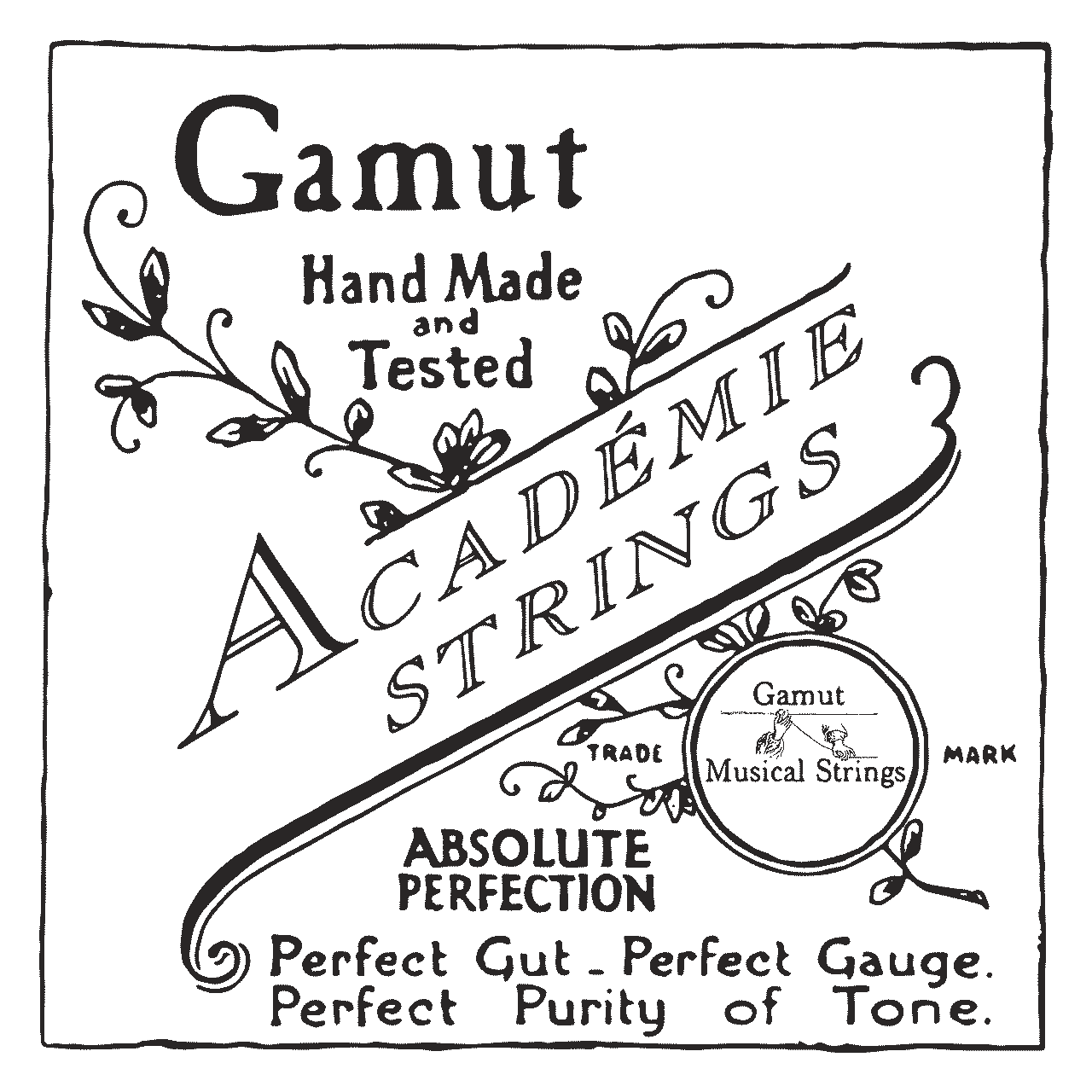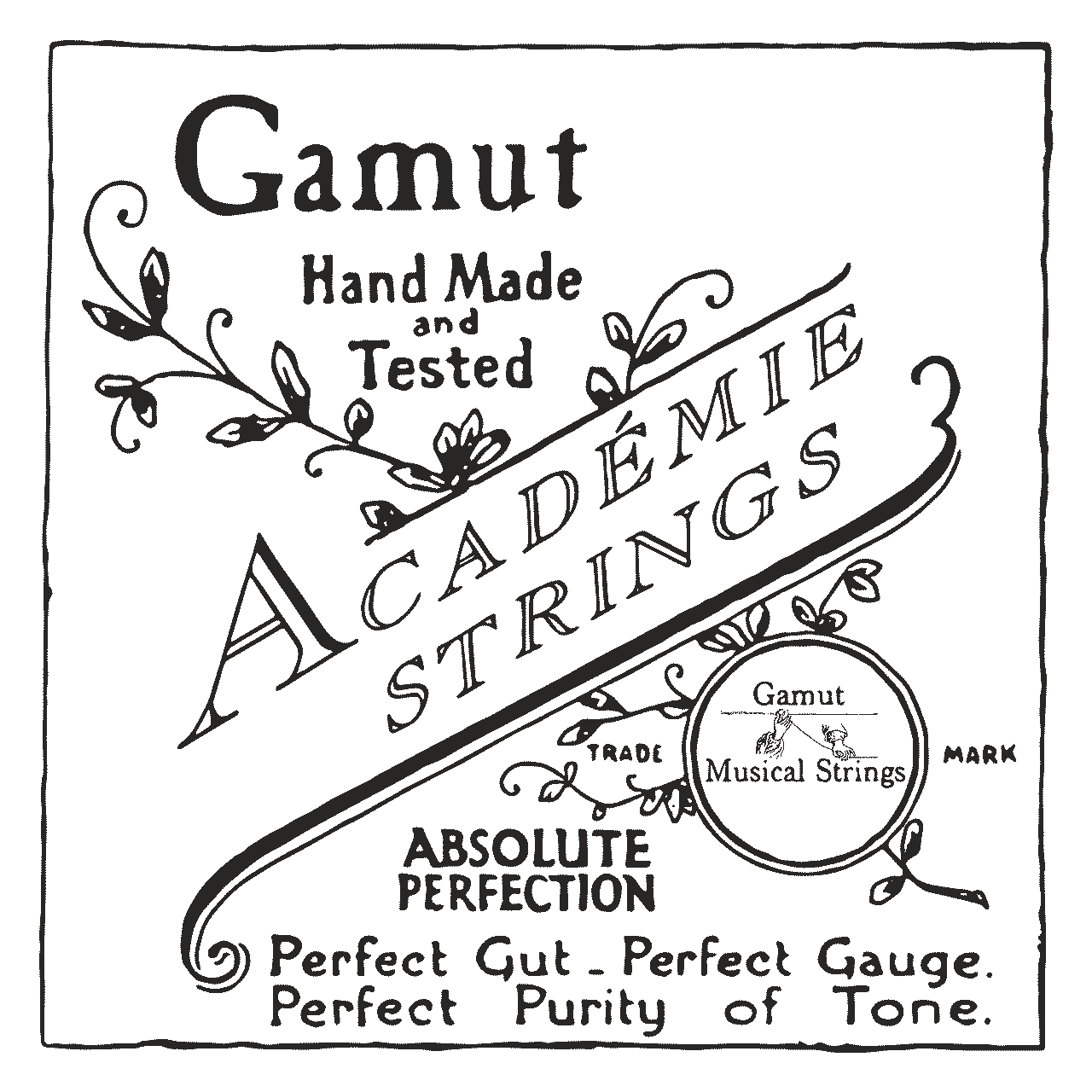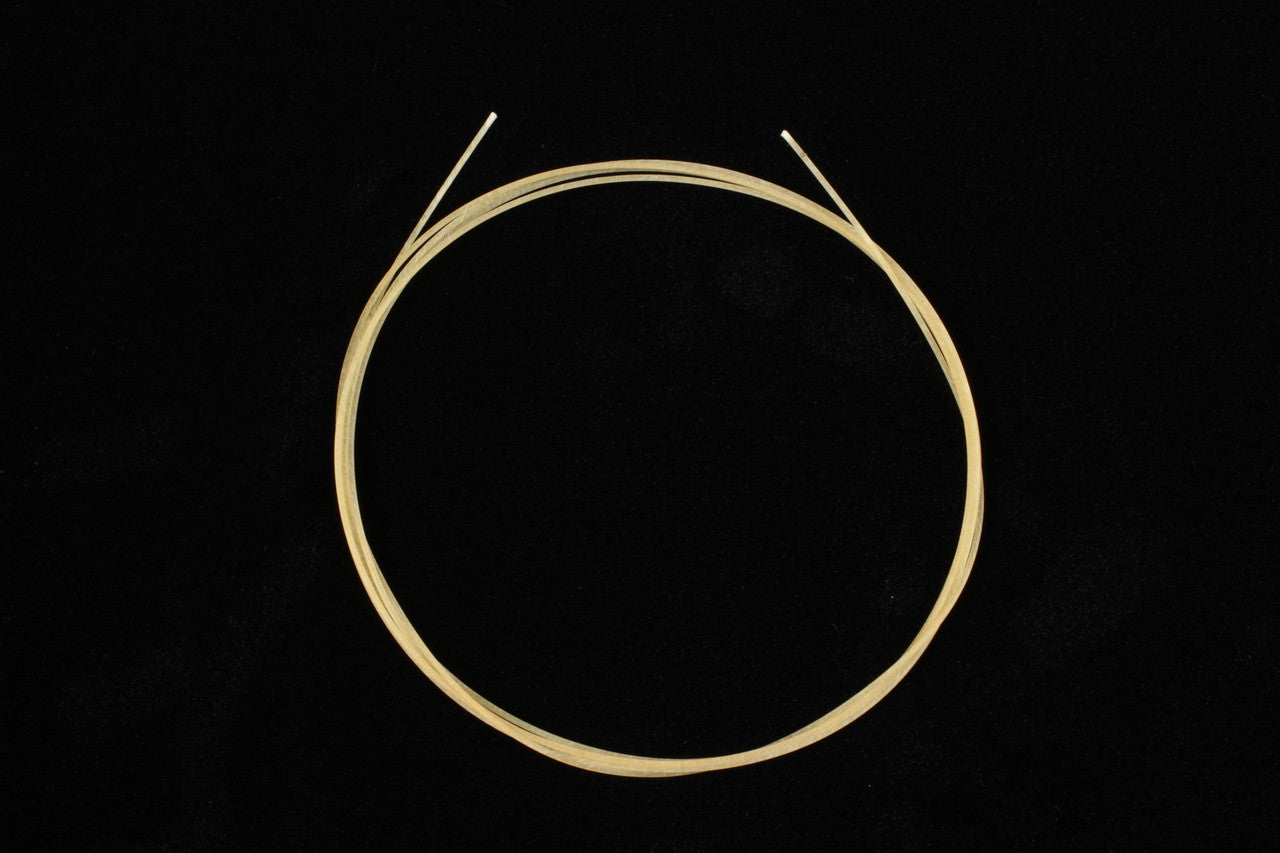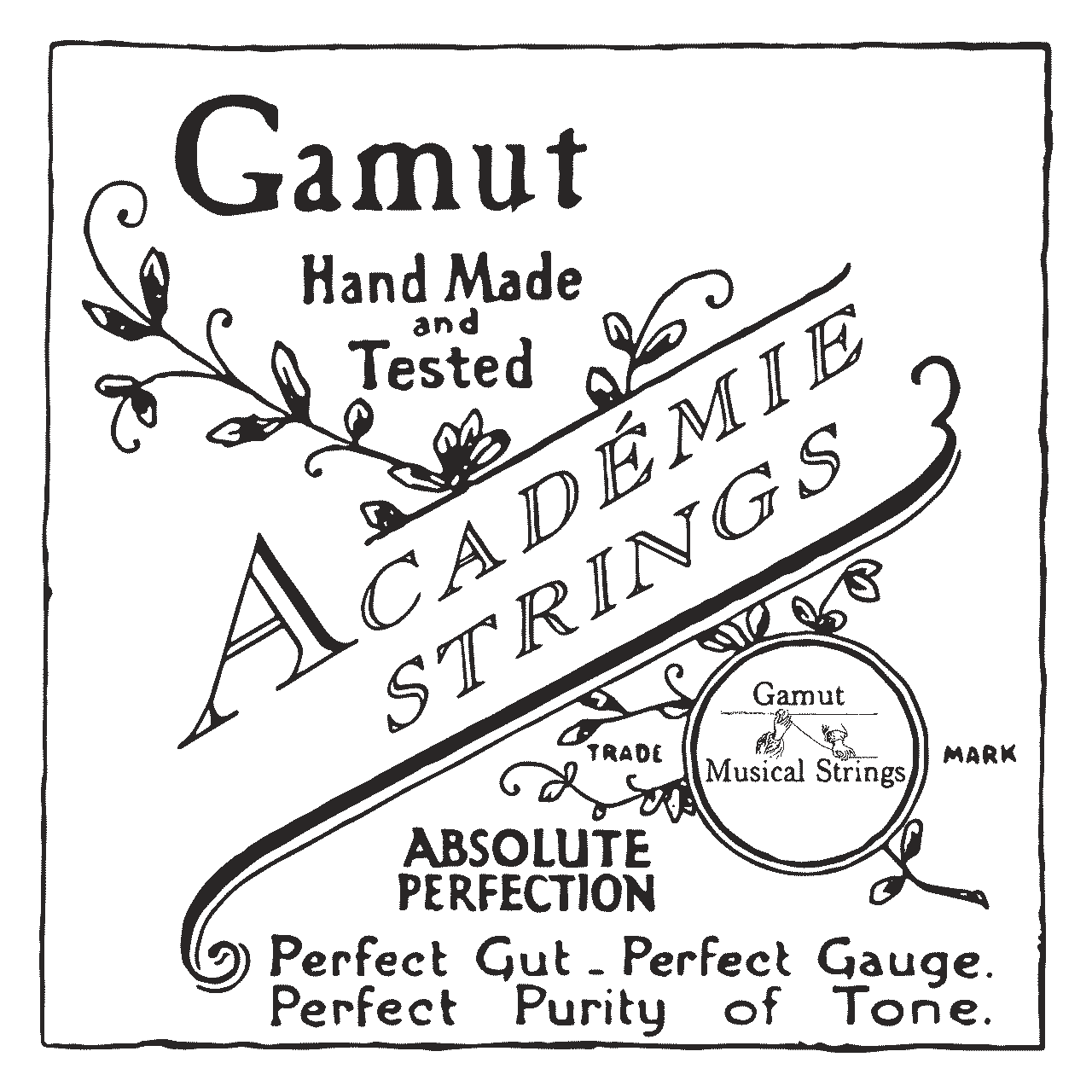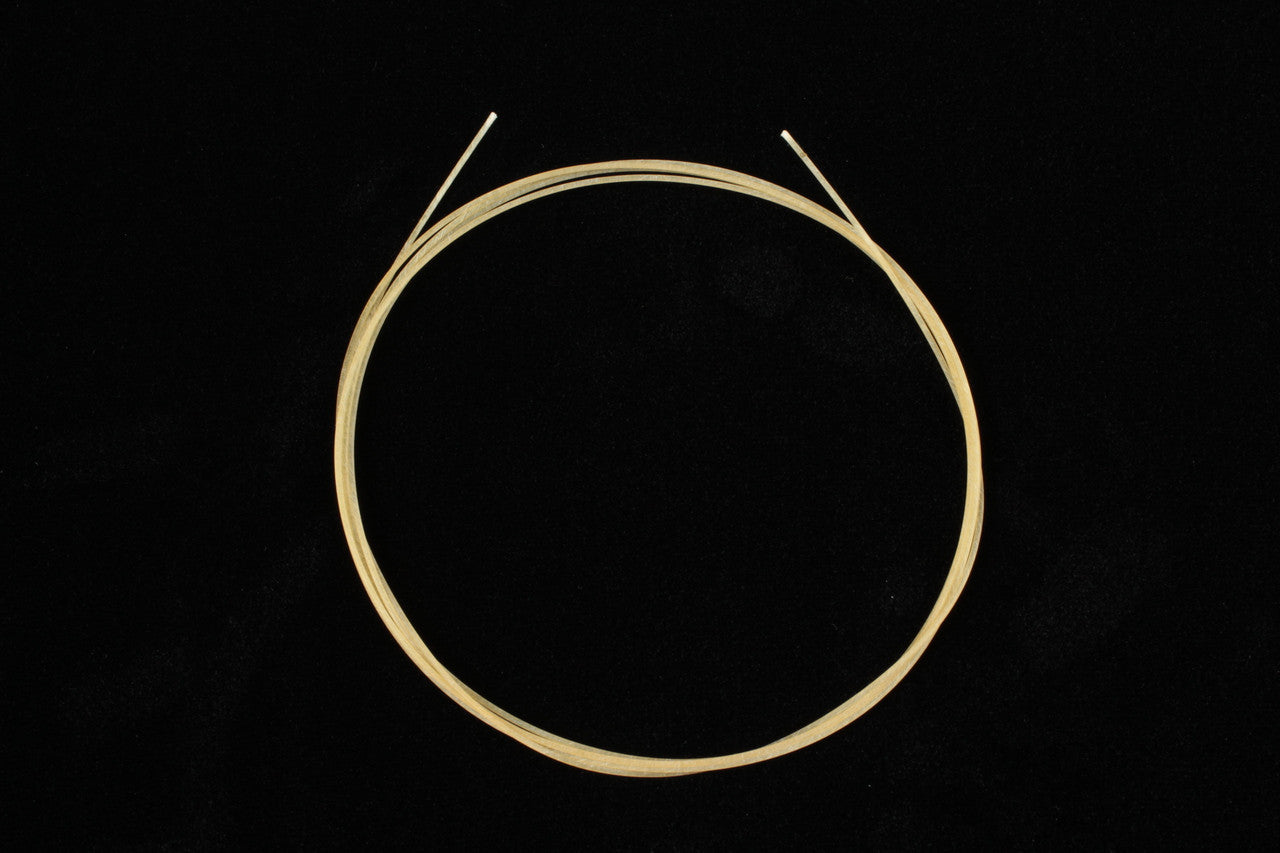Gamut Academie Fret Gut is made of beef gut (bovine serosa) for tying frets onto historical instrument necks, such as lutes and viols, comes in the standard (48", 120cm) length. How many frets you will get out of each length depends on how wide the neck of your instrument is, and whether you are using double or single frets.
Frets may be purchased individually or in a set. We package three sets of frets:
- Viol Fret Pack contains seven gauges: 1.20mm, 1.15mm, 1.10mm, 1.05mm, 1.00mm, .95mm, and .90mm
- Renaissance Lute Fret Pack contains eight gauges: 1.00mm, .95mm, .90mm, .85mm, .80mm, .75mm, .70mm, and .65mm
- Baroque Lute Fret Pack contains contains ten gauges: 1.20mm, 1.15mm, 1.10mm, 1.05mm, 1.00mm, .95mm, .90mm, .85mm, .80mm, and .75mm
The usual custom for gauging frets is to have the thickest fret be the first fret — the one nearest the nut — and then have each subsequent fret decrease by 0.05mm. Using this system, the first fret on a lute would be 1.00mm, the second fret 0.95mm, the third fret 0.90mm, and so on. On most lutes the thinnest size of fret that is practical is 0.65mm, so depending on the number of tied frets required by your instrument, you may need to use one, two, or three of the 0.65 frets to complete the fretting.
- Instructions for tying frets onto a lute neck
- Instructions for tying frets onto a viol neck
Natural gut strings are hand-rubbed with a light oil. Varnished strings have three coats of finish before being hand polished with the oil. There is an additional charge for varnished strings. The string comes with plain, unknotted ends.
Use our String Calculators to find the correct strings for your instrument. You can find Specific String Tensions here.

